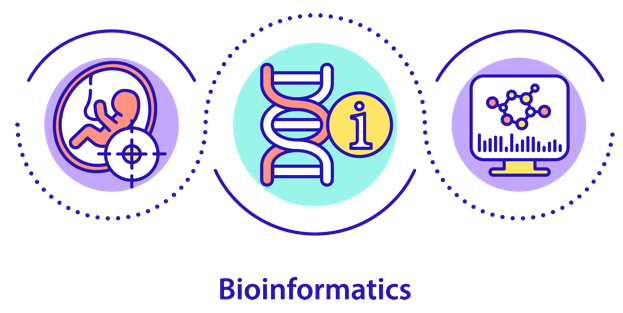More About Bioinformatics Tutor
More About Bioinformatics Tutor
Blog Article
See This Report about Bioinformatics Tutor
Table of ContentsBioinformatics Tutor Fundamentals Explained9 Simple Techniques For Bioinformatics TutorUnknown Facts About Bioinformatics TutorHow Bioinformatics Tutor can Save You Time, Stress, and Money.Bioinformatics Tutor - Questions
Of the overall participants involved in the training, 80% were pupils from public greater education and learning organizations, while the staying 20% came from private establishments. To get approved for a certificate of engagement, trainees were needed to participate in a minimum of 90% of the total training hours. As an outcome of this requirement, an excellent 95% of the participants efficiently acquired their certificates, having not only fulfilled the minimum participation criteria but also finished all designated tasks throughout the training.During the height of the COVID-19 pandemic, especially in between June and August 2020, the project group was charged with arranging specialized training in bioinformatics. This training was particularly aimed at pupils from the research team Nucleus for Research study in Applied Computer at the Federal College of Pará (UFRA) The adaptation to remote discovering systems due to the pandemic produced a possibility to check out brand-new teaching approaches and electronic devices that enhanced both reach and performance.
This training course was created to provide an obtainable yet detailed overview of Artificial Knowledge methods, specifically as applied in bioinformatics (Bioinformatics Tutor). This digital format made it possible for involvement from students across Brazil, several of whom might not have had the chance to go to in-person sessions.
The Facts About Bioinformatics Tutor Revealed
Roughly 50% of the total training hours were dedicated to practical activities where students constructed intelligent versions and applications in an array of clinical domain names, including genetics, molecular biology, and environmental data analysis. These platforms made it possible for pupils to involve in real-time data manipulation, model training, and formula trial and error.
The training course attracted 80 participants in total amount. Sixty of them were connected with different higher education and learning establishments in the state of Pará, while the staying twenty came from organizations located in 5 various other Brazilian states. This wide geographical representation highlighted the national passion in bioinformatics and the expanding need for specialized abilities in this field. By presenting Expert system in a appropriate and practical context, the campaign served to link the gap in between concept and real-world application, providing pupils with a solid foundation for future research or work in the field.
The training campaign formed component of a more comprehensive academic outreach initiative known as the Bioinformatics when driving project. This job has, over the years, introduced loads of students to the world of bioinformatics and computational biology. The occasions held under this umbrella campaign have occurred throughout numerous regions and years, as summarized in Table 1 (Listing of events, areas, years, and total numbers of trainees and teachers)
Several of these groups, at first brought together by their involvement in training occasions, have considering that gone on to create independent clinical study in cooperation with neighborhood scholastic establishments. The training not just promoted scientific thinking within the context of bioinformatics however also sparked collaborative connections that expanded past the training atmosphere.
More About Bioinformatics Tutor
The task itself was conceptualized and arranged by megabytes and RR, who oversaw the preparation and application of each action. Lectures were provided by a multidisciplinary group containing MB, FA, EF, KP, JS, DM, SN, LP, LG, A/C, rr, and ih. The same group, omitting IH and RR, additionally worked as tutors for the functional training components. Funding for the task was offered with the give 88887.200562/ 2018-00 from CAPES. The authors prolong their gratitude to everybody that added to the Learn More Here realization of this job, whether straight or indirectly, since its creation.
The Federal University of Pará's Workplace of Research study (PROPESP/UFPA) likewise provided monetary support, specifically for the production of the last manuscript. The writers declare no economic or business conflicts of interest that can have influenced the research. All analyses and point of views expressed in this post are exclusively those of the writers and do not always show those of their particular establishments, the author, editors, or customers entailed in the magazine procedure.

An Unbiased View of Bioinformatics Tutor
From a pedagogical perspective, the teaching approach utilized in the training was deliberately interactive. Classes were performed in a manner that encouraged student engagement and discussion, exceeding memorizing memorization to explore exactly how ideas are created, used in life, and tested in scholastic setups. The training philosophy concentrated on nurturing both strong and battling trainees, offering customized support, and structure self-confidence through continual mentorship and persistence.

Each group, including around 36 participants, was supported by three advisors-- a lot of whom were postdoctoral researchers with customized expertise. These mentors not just assisted develop the team jobs but additionally facilitated their execution, making certain that each research study inquiry was both appropriate and appropriately difficult. The goal was to give a naturally sensible context that participants might explore with flexible objectives and access to curated datasets.
For added insights right into the methodology and results of this project-based learning approach, viewers are directed to S1 Text, that includes detailed descriptions of the instructional structure, evaluation methods, and project styles made use of in the training sessions.
The Only Guide to Bioinformatics Tutor
Of the total participants included in the training, 80% were trainees from public greater education and learning establishments, while the continuing to be 20% came from private institutions. To qualify for a certificate of participation, students were called for to attend at least 90% of the my latest blog post total training hours. Notably, beyond the students that signed up in the training sessions, 7 seasoned teachers got view it now involved in supplying the training courses, while three devoted research study professors coordinated the overall training process. About 50% of the complete training hours were devoted to useful activities where students constructed intelligent designs and applications in a variety of scientific domains, consisting of genes, molecular biology, and environmental data analysis. The training not only fostered scientific thinking within the context of bioinformatics yet likewise stimulated collaborative relationships that expanded past the training atmosphere.
Report this page